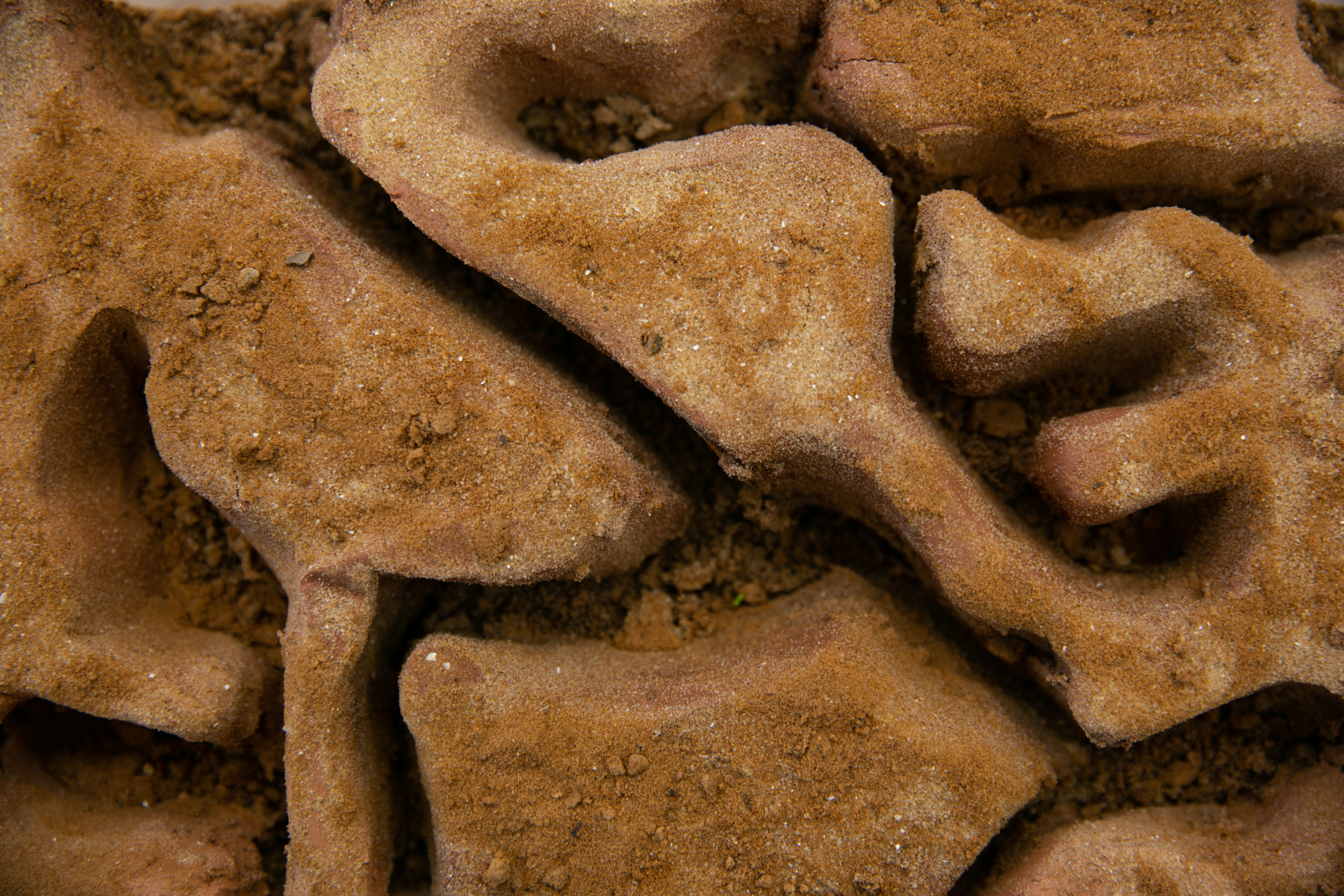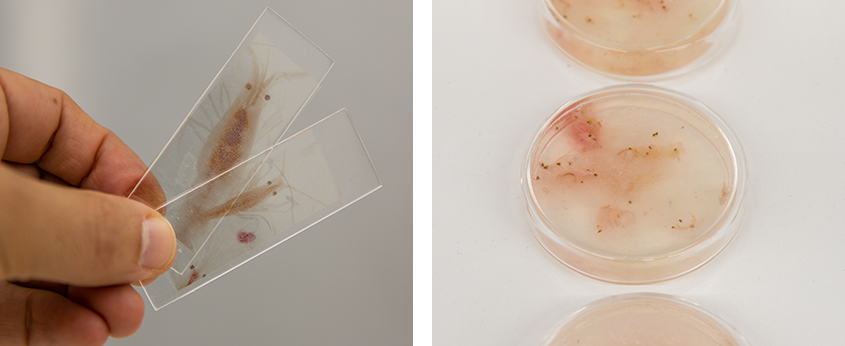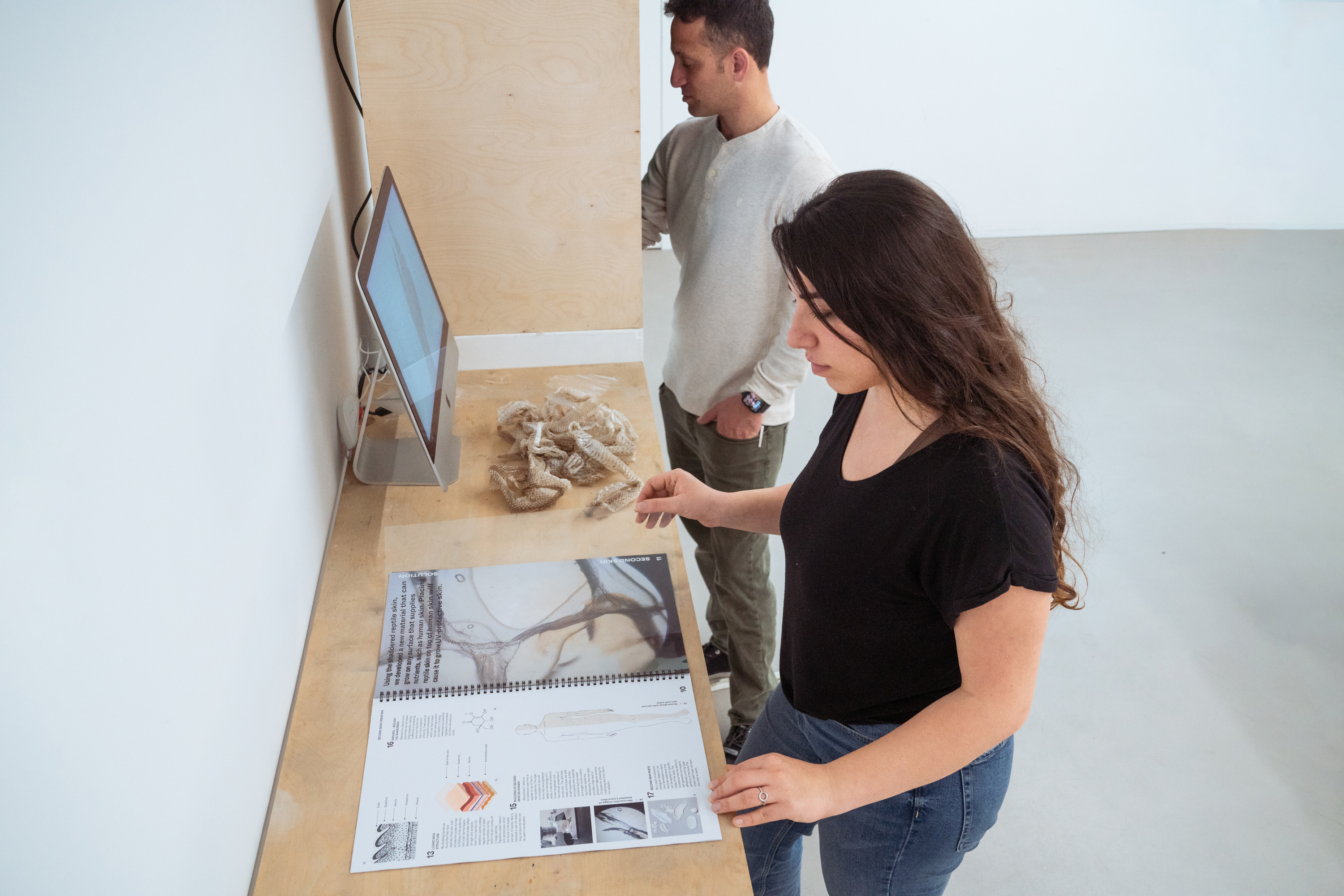Methods and Toolkit
PADLab is developing and using unique tools and exercises that combine methodological components from multiple disciplines: design, education, science, and strategy. Here are some of the tools we use.
The lab participants plan and run simulations that try to predict the evolution of habitats and organisms at the height of the climate crisis and in its wake. The participants play as living organisms — animals or plants — inhabiting a chosen habitat and are asked to respond to the changes in the environmental conditions within their ecological niche. The participants get to design changes to their bodies, their relationships with other organisms, and the way they affect their environment and the land around them. During the game, the participants work with data-driven climate forecasts and other predictions, as well as information about the biology and behavior of the chosen organism. As they work, the participants envision and follow the “future history” of their chosen habitat on a timeline: from the present moment to the height of the climate crisis and onward to an age where humanity is no longer the main shaper of the space it inhabits. At the end of this process, the participants have a comprehensive description of how their habitat’s flora and fauna will look in the future, including the species’ behavior, its relationships within the local ecosystem, and the new landscape this ecosystem will have shaped.

Common Reed; Noy Dabull, Eden Frenkel
1. Multiscale Ecological Scenarios
(MES)
Our location-specific design brief processing toolkit relies on environmental forecasts and enables us to apply global-scale information about changing environmenta conditions to a specific location.
The lab has developed several game tools tailored to the chosen habitat:
List of species: Choosing species that typically inhabit the area, based on the number of players.
Scenario: Writing a plausible future scenario as a story, based on evidence-based forecasts.
Game cards: The players use the cards as they progress from phase to phase throughout the game. The cards include instructions for each phase badsed on the scenario.

2. Ecoboard
A dashboard that enables an overview of speices condition and relationships at all times. Here is an overview of the board:
1. The circle of species shows all the species in the game and is comprised of two parts: Status area and a circle for Inter-species relationships.
2. The site map outlines the geographic area where the game takes place.
3. Scenario cards (see above).
4. The information center references to various sources of relevant bibliographic information about the chosen habitat.
5. Species work boards: each group of players has its own Miro board, which they are free to use as they like. All the boards in the game are accessible through the Ecoboard.
3. Species Embodiment Exercises (SEE)
A training program for learning to embrace, internalize and share non-human modes of being. Participants roleplay as animals or plants to de-center their human experience and become an imagined ‘other.’
The experience fosters an intimate connection with non-human life forms while also encouraging critical thinking and a discussion of challenges.


Skeleton Shrimp; Amit Mitelman, Daniel Yahav, Chen Kadosh
4. Body-Relationships-Landscape Reciprocal Design (BRL)
A method for designing the evolving body of a species, the changes in the relationships between species, and the landscape they are shaping. The participants practice using a wide range of techniques and media: models, video, photo-manipulation, sketching and more, taking into account the scale — from internal to macroscopic to a bird’s eye view of the landscape.

Amphipod; Zohar-Yam Lerer, Maria Merfeld
5. Species' Communication Design (SCD)
These are exercises that encourage inter-species communication. The challenges the players face together at set points throughout the game foster systemic thinking and deepen their understanding of interdependence within the ecosystem. This creates an opening for strategizing and encouraging players to form collaborations and alliances. The players are called to send signals to other species on the Ecoboard, informing them of relevant needs, opportunities and threats. Thus, new relationships form and new strategies are born.



6. Future Ecology Display (FED)
A tool for visualizing possible futures for complex habitats in accordance with a preset ecological index. The tangibility of the products of this process is a provocative trigger for dialog around the leverage points in the chosen habitat and the possibilities we humans have, as The Anthropocene nears its end. What have we learned? What can we do? What can we avoid doing? What should we study and develop further? What kinds of partnerships do we need to form to achieve this?

Nomads;Idan Sapir, Mako Krikheli, Julia Kressirer
Lorem ipsum dolor sit amet, consectetur adipiscing elit, sed do

